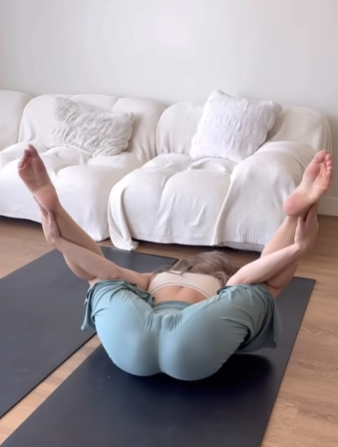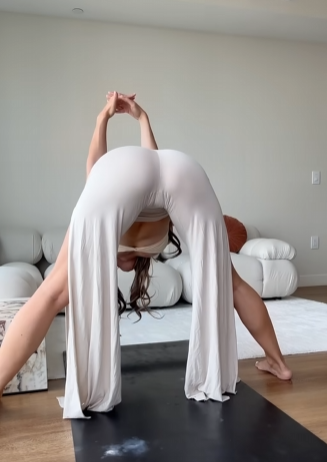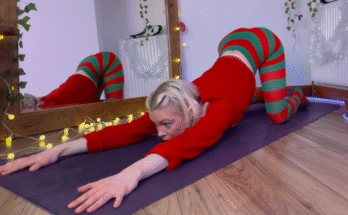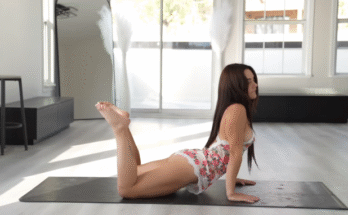
Introduction
Yoga is a practice that combines strength, balance, flexibility, and mindfulness. Among its many postures, the headstand—also known as Sirsasana—is often called the “king of asanas.” While the headstand itself focuses on inversion and stability, adding leg-focused stretches to the sequence can significantly enhance the benefits for your hamstrings, quadriceps, hip flexors, and calves. This combination not only builds core strength but also improves circulation and releases tension from your lower body.
In this article, we’ll explore a headstand leg-focused yoga stretch flow, its benefits, step-by-step instructions, tips for safety, and variations to suit beginners and advanced practitioners.
Why Add Leg-Focused Stretches to a Headstand Practice?
The headstand primarily works on the upper body and core, but when we incorporate leg stretches, we create a more holistic practice that balances strength and flexibility. Here’s why this combination is powerful:
- Enhances Flexibility
Tight hamstrings, hip flexors, and quadriceps can restrict mobility. Incorporating leg stretches helps improve range of motion and prevent injuries. - Balances Strength
While the headstand builds arm and shoulder strength, leg stretches counterbalance this by engaging and lengthening the lower body muscles. - Improves Circulation
Inversions like headstand reverse blood flow, helping to rejuvenate the body. Adding leg stretches while inverted or during transitions amplifies this effect. - Promotes Mind-Body Awareness
Moving slowly between inversion and stretching encourages focus and mindfulness, key elements of yoga.

Preparing for the Headstand
Before jumping into a headstand, proper warm-up and alignment are essential. Spend 5–10 minutes doing:
- Cat-Cow (Marjaryasana-Bitilasana)
To warm up your spine and shoulders. - Downward Dog (Adho Mukha Svanasana)
To stretch hamstrings and calves. - Low Lunge (Anjaneyasana)
To open hip flexors. - Dolphin Pose
To build shoulder strength necessary for inversion
Step-by-Step: Headstand with Leg Focus
Step 1: Foundation and Alignment
Start on your knees, interlace your fingers, and place your forearms on the mat, elbows shoulder-width apart. Create a firm triangle base by placing the crown of your head lightly on the mat with your hands cupping the back of your head.
Step 2: Lift into Headstand
Tuck your toes, lift your hips, and slowly walk your feet toward your body until your hips stack over your shoulders. Engage your core, bend your knees, and gently lift your legs upward until you are in a straight line from head to toe.
Step 3: Leg Focus Variations
Once stable in your headstand, try these leg-focused stretches:
- Scissor Splits
Slowly lower one leg toward the mat while keeping the other extended upward. Alternate sides for 3–5 breaths each. This deeply stretches the hamstrings and hip flexors. - Straddle Split
Open your legs wide into a straddle position. Keep your toes active and inner thighs engaged to avoid collapsing. This targets the inner thighs and groin muscles. - Pike Fold
Slowly lower both legs together toward your chest, bending at the hips. This engages the core and stretches the lower back and hamstrings. - Lotus or Eagle Wrap (Advanced)
Cross your legs in lotus or eagle position while in headstand. This adds a hip-opening element and challenges balance.
Step 4: Controlled Exit
Lower one leg at a time with control, return to Child’s Pose (Balasana), and rest for several breaths to release pressure from the head and neck.

Breathing Techniques
- Inhale as you lift your legs.
- Exhale during leg extensions or stretches.
- Use slow, steady breathing to maintain balance and focus.
Safety Tips
- Avoid if you have neck, back, or shoulder injuries.
- Practice against a wall if you’re a beginner.
- Engage your core at all times to protect your spine.
- Never rush into the headstand—alignment comes first.
- Warm up before and cool down after the session.
Benefits of Headstand with Leg Stretches
- Builds Strength: Shoulders, arms, and core become stronger with regular practice.
- Improves Flexibility: Adding leg stretches enhances hip and hamstring flexibility.
- Boosts Mental Clarity: Inversions increase blood flow to the brain, aiding concentration.
- Balances Energy: This practice activates the crown chakra, promoting calmness and focus.
Tips for Beginners
- Use a yoga wall for support.
- Focus on short holds (5–10 seconds) before extending the duration.
- Start with Dolphin pose to build arm and shoulder strength.
- Always have a soft surface like a yoga mat or folded blanket under your head.
Advanced Variations
- Headstand to Forearm Stand Transition
- Dynamic Scissor Kicks
- Press-up Headstand without Jumping
Conclusion
The Headstand Leg Focused Yoga Stretch is more than just an inversion—it’s a complete practice that builds strength, increases flexibility, and sharpens mental focus. By incorporating mindful leg stretches into your headstand routine, you create a balanced, energizing flow that benefits your entire body. Whether you are an experienced yogi or a curious beginner, this sequence will challenge and inspire you to explore the harmony between strength, flexibility, and balance.



